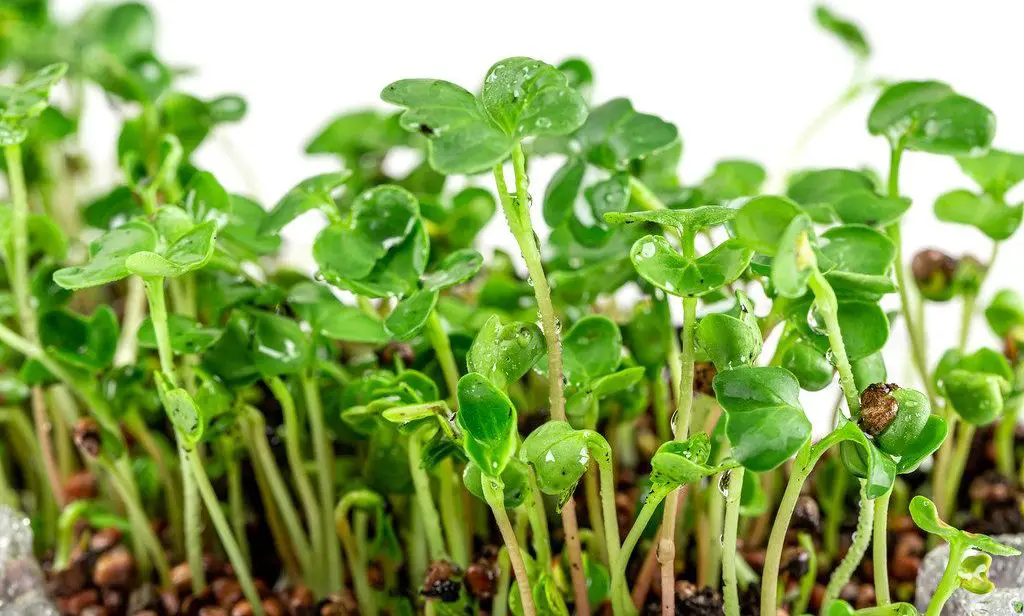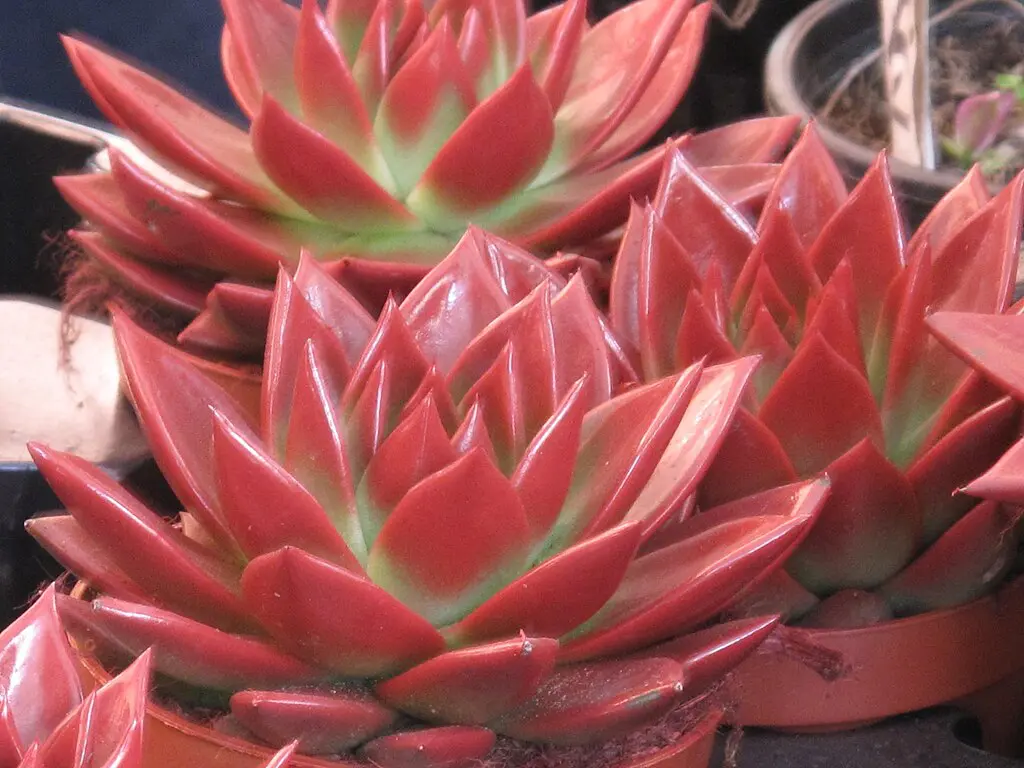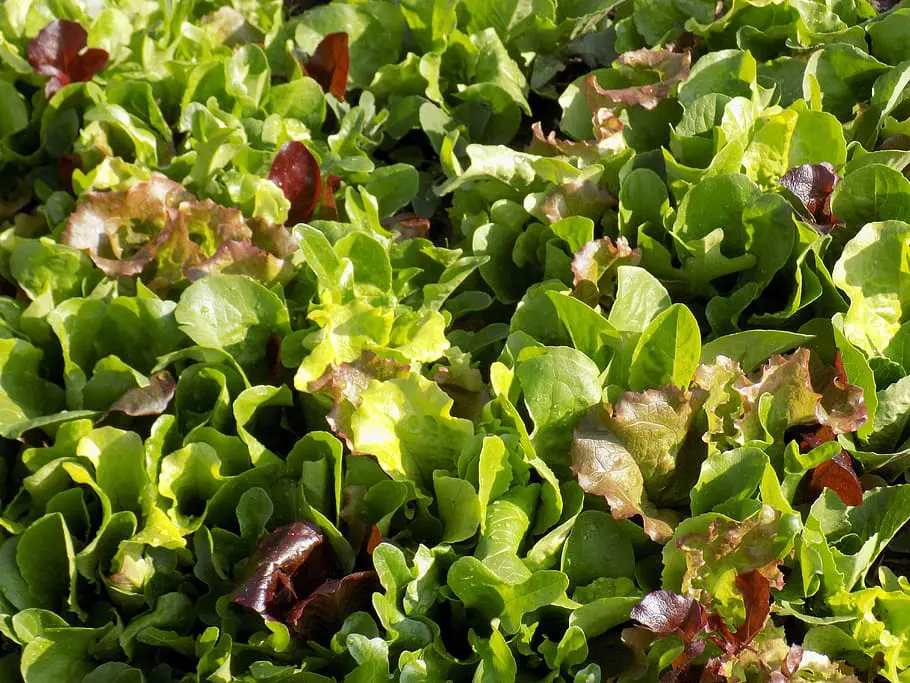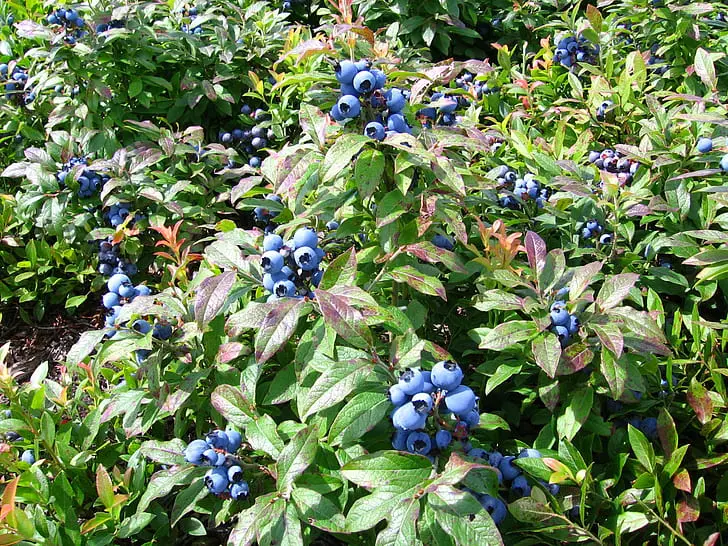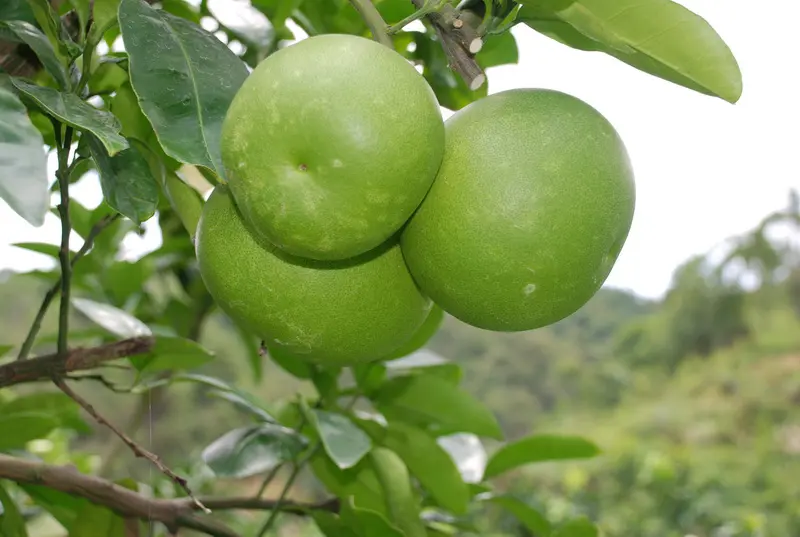This post contains affiliate links. If you buy something from one of our links we may earn a commission. Thanks
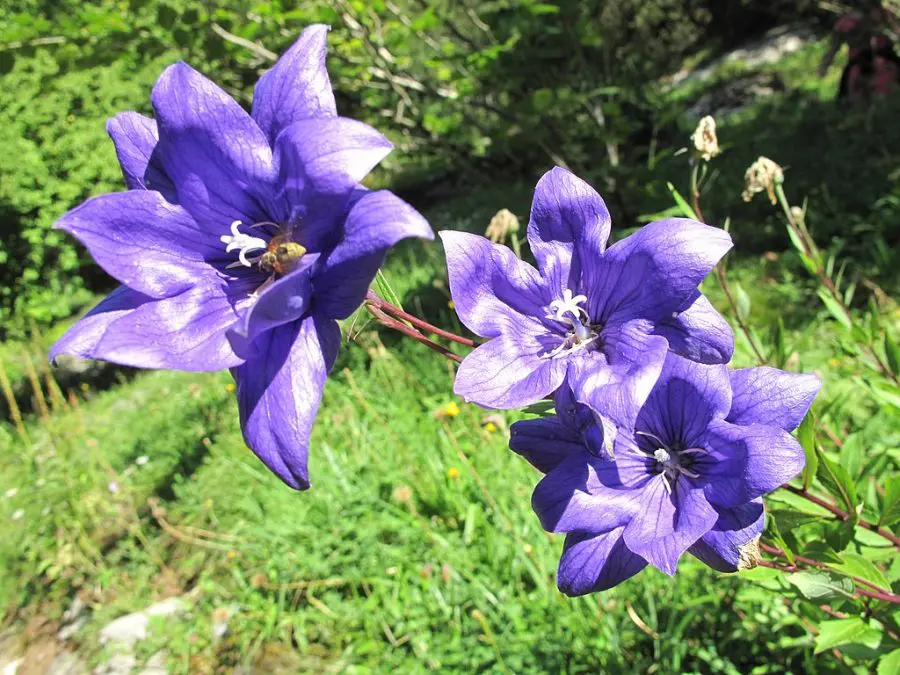
Dive into the enchanting world of growing balloon flowers from seed. Discover tips, tricks, and everything in between to cultivate these beauties in your garden.
Growing Balloon Flowers from seed is a straightforward process. Sow the seeds indoors 6-8 weeks before the last frost date. Use well-draining soil and keep it moist. Germination usually occurs within 15-20 days. Once the seedlings have at least two leaves, transplant them into your garden or larger pots. Full sun to partial shade is ideal.
Ever thought of adding a touch of whimsy to your garden? Growing balloon flowers from seed might just be the magical touch you’re looking for.
In this guide, we’ll walk you through the entire process, from sowing to blooming, ensuring your garden becomes the talk of the town.
Growing Balloon Flowers from Seed
Growing balloon flowers from seed is a rewarding experience, allowing gardeners to cultivate these unique, balloon-like buds that bloom into starry bell-like blossoms, adding charm and elegance to any garden.
Imagine a garden where whimsical blooms resembling balloons burst open to reveal starry flowers.
That’s the magic of Platycodon grandiflorus, commonly known as balloon flowers.
These perennial wonders have been captivating gardeners for ages, and there’s something uniquely satisfying about nurturing them from tiny seeds to full blooms.
In this guide, we’ll explore the world of balloon flowers, from their origins to their care, ensuring you have all the knowledge to cultivate these beauties in your garden.
An overview of balloon flowers (Platycodon grandiflorus):
Balloon flowers belong to the Campanulaceae family and are native to East Asia. Their unique balloon-like buds open to reveal star-shaped flowers, making them a standout in any garden.
Importance of growing from seeds:
Growing plants from seeds is a rewarding experience. It allows for genetic diversity, leads to healthier plants, and offers a cost-effective way to fill your garden with beautiful blooms.
What Are Balloon Flowers?
Balloon flowers, scientifically known as Platycodon grandiflorus, are unique perennial plants native to East Asia. They belong to the Campanulaceae family.
What makes them particularly enchanting is their flower buds, which puff up like balloons before bursting open into vibrant, star-shaped flowers.
These blooms typically come in shades of blue, pink, or white. The name “balloon flower” aptly describes the bud’s appearance before it fully opens.
Beyond their visual appeal, balloon flowers are also valued for their hardiness and ease of care, making them a popular choice for gardens around the world.
Whether planted in beds, borders, or containers, these flowers are sure to captivate with their distinct shape and vibrant colors.
Origin and native regions:
These enchanting flowers hail from East Asia, including regions like China, Japan, and Korea.
Over the years, their popularity has spread, making them a global garden favorite.
Description of the flower and its unique characteristics:
Before blooming, their buds puff up, resembling balloons. As they bloom, they transform into star-like flowers, available in shades of blue, pink, and white.
Importance in gardens:
Beyond their beauty, balloon flowers are hardy and disease-resistant. Their low maintenance nature combined with their aesthetic appeal makes them a staple in many gardens.
Propagation Methods
Diving into the world of gardening, there’s always that thrilling moment when you decide how to start your plants.
With balloon flowers, you’re in for a treat because there are a few ways to kickstart their journey.
Whether you’re a fan of sowing seeds, love the idea of transplanting young plants, or fancy trying your hand at stem cuttings, there’s a method that’ll resonate with you.
Let’s delve into the various propagation methods for these beauties, and who knows?
You might just discover a new favorite way to bring your garden to life!
From Seed:
Starting seeds indoors: Begin your journey 6-8 weeks before the last spring frost. Surface sow the seeds, ensuring they get ample light for germination.
Direct sowing outdoors:
For those who prefer a direct approach, sowing seeds outdoors after the last frost is an option. This method might mean a longer wait for blooms, but the results are worth it.
From Nursery Starts:
For those eager to see quicker results, young plants from nurseries can be transplanted directly into gardens.
From Cuttings:
For the experimental gardener, propagating from stem cuttings in spring is an exciting venture. Just remember, balloon flowers have delicate roots, so handle them with care.
Ideal Growing Conditions
Alright, let’s chat about setting the stage for our balloon flowers.
Just like we all have our favorite spots on the couch or that perfect pillow arrangement for a good night’s sleep, plants have their preferences too.
And trust me, when balloon flowers are happy with their surroundings, they truly shine!
So, if you’re wondering about the perfect sunbathing spot for them or the kind of bed (read: soil) they’d love to snuggle into, you’re in the right place.
Let’s dive into creating that dreamy environment where our balloon flowers can thrive and show off their best selves!
Sunlight requirements:
These flowers flourish in full sun to partial shade. A spot that gets a mix of both is ideal.
Soil type and pH:
An organically-rich, well-draining soil with a pH between 5.5 to 7.5 is their sweet spot.
Drainage and moisture needs:
While balloon flowers love moisture, they detest waterlogged conditions.
Ensuring good drainage is crucial to prevent root rot and other issues.
Growing Tips
So, you’ve got your balloon flowers and you’re all set to embark on this gardening adventure.
But wait, every plant has its little quirks and secrets, right? Balloon flowers are no different.
Think of these growing tips as the inside scoop, the little whispers that plants would share if they could chat with us.
From sowing secrets to the tender love they need, we’ve got some nifty pointers to ensure your balloon flowers not only grow but flourish.
Ready to become the ultimate balloon flower whisperer? Let’s dive in!
Importance of surface sowing for germination:
These seeds need light to germinate. Surface sowing ensures they get the light they crave.
Handling delicate taproots:
Their roots are sensitive, so whether you’re transplanting or just checking, handle them with care.
Ensuring good drainage and moisture balance:
While they love moisture, it’s essential to strike a balance. Consistent moisture without waterlogging is the key to their happiness.
Pruning and Maintenance
Now, here’s where our nurturing side truly comes into play. Imagine giving your balloon flowers a little spa day!
Pruning and maintenance are all about pampering and taking care of our green buddies, ensuring they look their best and feel fantastic.
It’s not just about snipping here and there; it’s about understanding their needs, ensuring they’re healthy, and setting them up for a show-stopping performance in your garden.
So, grab your gardening gloves, maybe put on some relaxing music, and let’s delve into the art of keeping our balloon flowers in tip-top shape!
Managing leggy stems:
If your flowers are spreading out too much, a trim can encourage more vertical growth.
Self-sowing and its control:
These flowers are enthusiastic self-sowers. Deadheading spent blooms can help control their spread.
Fertilization recommendations:
While they aren’t overly demanding, a dose of all-purpose fertilizer in early spring can provide the nutrients they need for a lush growth.
Cultivars to Consider
For those looking to add variety to their gardens, there are several balloon flower cultivars to consider. There’s a world of cultivars out there. ‘Astra Double’ is great for those with limited space, ‘Rose’ offers a touch of romance, ‘Fuji Blue’ is a stunner with its deep blue petals, and ‘Sentimental’ is perfect for those who love compact plants.
Managing Pests and Diseases
Every garden, no matter how well-tended, has its share of challenges.
And while our balloon flowers are generally hardy, they aren’t entirely immune to the occasional pest or disease.
But with a keen eye and some proactive measures, we can ensure these beauties remain healthy and vibrant.
Common pests:
Ah, the tiny trespassers of the plant world! Balloon flowers, with their lush foliage, can sometimes attract a few unwanted guests.
Snails and Slugs: These slimy little critters love munching on tender plant leaves.
If you notice irregular holes on the edges of your balloon flower leaves, these might be your culprits.
A simple trick? Place a shallow dish filled with beer near the affected area. The yeast attracts them, and they’ll drown in the liquid.
Also, sprinkling crushed eggshells or diatomaceous earth around the base of your plants can deter them, as they dislike crawling over sharp surfaces.
Aphids: These tiny green or black insects can sometimes be found on the undersides of leaves, sucking out the plant’s sap.
A strong spray of water or introducing beneficial insects like ladybugs can help manage them.
For bad infestations, you can use insecticidal soap or neem oil to control them.
Diseases:
While balloon flowers are relatively disease-resistant, they aren’t invincible.
Root Rot: This is often a result of waterlogged soil.
If you notice your balloon flower’s leaves turning yellow or wilting, despite regular watering, root rot might be the issue.
Ensure your soil has good drainage, and consider repotting the plant if the condition persists.
Powdery Mildew: This appears as a white powdery substance on leaves, especially in humid conditions.
To prevent it, ensure your plants have good air circulation and avoid overhead watering.
If it appears, consider using a fungicide or a homemade solution of baking soda, water, and liquid soap.
Remember, the key to managing pests and diseases is observation.
Regularly check your plants, act swiftly at the first sign of trouble, and your balloon flowers will thank you with vibrant blooms and healthy growth!
Best Uses in Gardens
Gardening is a bit like painting a canvas, isn’t it? Every plant, every flower, adds a unique touch to the masterpiece that is your garden.
And balloon flowers? Well, they’re like those vibrant strokes of color that bring the whole picture to life.
Whether you’re designing a new garden layout or just looking for that perfect addition to your existing space, understanding where and how to place balloon flowers can make all the difference.
From bed placements to finding the perfect plant buddies for them, let’s explore how to showcase these beauties in the best light.
Ready to let your inner garden designer shine? Let’s dive in!
Bed placements:
Balloon flowers are versatile, and their placement can either make them the star of the show or a supporting character in a larger ensemble.
Front of the Bed: Due to their medium height, placing them at the front ensures they’re not overshadowed by taller plants.
This also allows their unique balloon-shaped buds to be easily visible, adding intrigue to your garden.
Middle of the Bed: If you have a tiered bed design, placing them in the middle, surrounded by shorter plants in the front and taller ones at the back, creates a beautiful gradient effect.
Borders and Edges: Their vibrant colors make them perfect for defining the edges of pathways or garden sections.
Plus, their hardy nature means they can withstand a bit of foot traffic.
Companion plants:
Just like we have our favorite buddies to hang out with, balloon flowers too have some plant pals they vibe well with.
Bee Balm: This plant not only complements the balloon flower in height but also attracts pollinators, ensuring your garden is buzzing with life.
Black-eyed Susan: The bright yellow of the Black-eyed Susan contrasts beautifully with the blues and pinks of balloon flowers, creating a visual treat.
Blazing Star: Its tall, spiky blooms add a different texture to the garden, making it a great backdrop for the rounder blooms of the balloon flower.
Daylily: With their similar growth patterns and complementary colors, daylilies and balloon flowers are like two peas in a pod, perfect for planting side by side.
Remember, gardening is as much about intuition as it is about knowledge. Trust your instincts, play around with placements, and soon, your garden will be the envy of all your neighbors!
Growing Balloon Flowers FAQs
Alright, let’s dive into some common questions you might have about balloon flowers. We all have those I wonder moments when gardening, and it’s always great to have some answers at hand.
Whether you’re curious about watering, potting, or the general quirks of these lovely blooms, we’ve got you covered.
Let’s unravel some of the mysteries of balloon flowers together!
Q: How often should I water balloon flowers?
A: It’s best to keep the soil consistently moist but not soggy. Check the top inch of the soil; if it feels dry, it’s time to water.
Q: Can balloon flowers grow in pots?
A: Absolutely! Especially the dwarf varieties, they’re perfect for containers, patios, or balconies.
Q: Are balloon flowers easy to grow from seed?
A: With the right conditions and a touch of patience, growing balloon flowers from seeds is a straightforward and rewarding process.
Q: How long does it take for balloon flower seeds to germinate?
A: Typically, you can expect to see sprouts emerging in a few weeks, given the right conditions.
Q: Do balloon flowers come back every year?
A: Yes, they do! Balloon flowers are perennials, so they’ll return to grace your garden year after year.
Q: Do balloon flowers reseed themselves?
A: They certainly do. These flowers have a habit of spreading their seeds, so you might find new plants popping up in unexpected places in your garden.
Growing Balloon Flowers from Seed Conclusion
As we wrap up our deep dive into the world of balloon flowers, it’s been quite the journey, hasn’t it?
From sowing those tiny seeds to watching them bloom into beautiful flowers, every step has its own charm.
Gardening, much like life, is all about learning and growing.
So, whether you’re a seasoned gardener or just starting out, there’s always something new to discover.
Let’s round things up and reflect on the magic of these balloon wonders, shall we?
Recap:
Embarking on the journey of growing balloon flowers from seed offers a unique gardening experience.
From understanding their origins to mastering their care, these flowers promise a vibrant display and a sense of accomplishment.
Encouragement to Give Balloon Flowers a Try:
Gardening is as much about the journey as it is about the results. So, embrace the process, learn from each step, and soon, your garden will be a testament to your dedication and love for these balloon wonders. Get more backyard garden ideas. Happy gardening!










